Hot springs are one of the biggest attractions in Japan, but what about volcanoes? What do onsen and volcanoes have to do with each other? In this article, we explain the relationship between onsen and volcanoes. We also recommend hot springs in Japan you should visit, and volcanoes that you can climb or should visit.
Table of Contents
- The Relationship between Onsen and Volcanoes
- Recommendations for Hot Springs in Japan
- Japan’s 3 Major Onsen
- Arima Onsen (Hyogo)
- Kusatsu Onsen (Gunma)
- Gero Onsen (Gifu)
- Beppu Hatto Onsen (Gifu)
- Hakone Onsen (Kanagawa)
- Noboribetsu Onsen (Hokkaido)
- Japan’s 3 Major Onsen
- Recommendations for Volcanoes in Japan
- Mount Fuji (Yamanashi, Shizuoka)
- Mount Sakurajima (Kagoshima)
- Mount Aso (Kumamoto)
- Mount Unzen (Nagasaki)
- Daisetsuzan (Hokkaido)
- To Close
What is the relationship between onsen and volcanoes?

Hot springs and volcanoes are closely related. A volcano is a mountain that’s formed when magma under the earth’s crust erupts to the surface. Hot springs, on the other hand, are created when underground water and gas that are heated by the magma’s heat causes the water and gas to gush to the surface. In volcanic areas, magma is near to the surface which means there are more hot springs around. Hot springs created by volcanic activity are called “volcanic hot springs (「火山性温泉」)”.
The Japanese islands are located on top of 4 tectonic plates (large bedrocks on the surface of the earth). In such places, magma tends to be more active due to the movement of plates, and as a result many volcanoes and hot springs occur. In addition, the Japanese islands are located in the path of the Pacific Ring of Fire, which is a path surrounding the Pacific Ocean where all the active volcanoes are located. According to National Geographic, this horseshoe-like outline extends for 40,000 kilometers and is inclusive of 75% of the Earth’s volcanoes. Japan is home to 110 or 7% of the planet's most active volcanoes.
Note that just because its waters sprout up from underground does not mean it is automatically classified as a hot spring. The definition of “hot springs”, under Japan’s Hot Spring Law (温泉法), is hot springs that contain a specific amount of substances (the water’s composition), or has a constant temperature of 25℃ and above.
※ Ministry of Environment, “温泉の定義 ※ National Geographic, "Ring of Fire"
Writer's Pick
Recommendations for Hot Springs in Japan
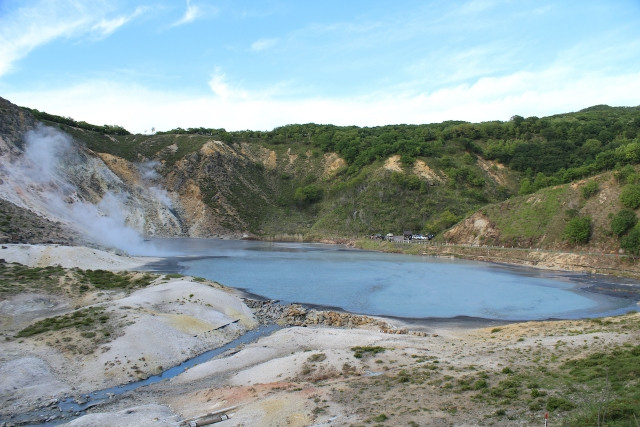
Here, we will introduce “Japan’s 3 Major Onsen (日本三大名泉)” and other top ranking hot springs in Japan you should visit.
Japan’s 3 Major Onsen
“Japan’s 3 Major Onsen (日本三大名泉)” are Kusatsu Onsen in Gunma prefecture, Gero Onsen in Gifu Prefecture, and Arima Onsen in Hyogo Prefecture. The 3 onsen were selected during the Muromachi period by a monk who described them in his collection of poetry.
Arima Onsen 有馬温泉 (Hyogo Prefecture)
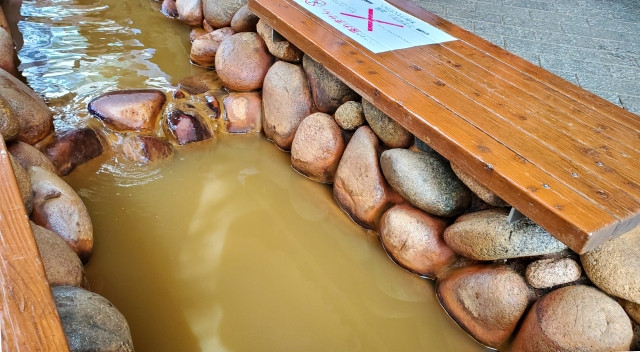
The hot spring town, Arima Onsen is located in a mountainous area in Kobe, Hyogo Prefecture. It is an old hot spring town with over 1,000 years of history. Arima Onsen is a non-volcanic hot spring. It has 2 sources of hot spring water; Kinsen and Ginsen, that have different water compositions. There are many hot spring inns in the town, even some that allow day trip visitors. The hot spring village is nestled in the mountains so you can enjoy soaking in the onsen whilst surrounded by nature.
There are many sightseeing spots in Arima Onsen hot spring town to visit, like Tosen Shrine and Onsenji Temple. Arima Geiko, a culture unique to Arima Onsen, is also something you should not miss.
Kusatsu Onsen 草津温泉 (Gunma Prefecture)
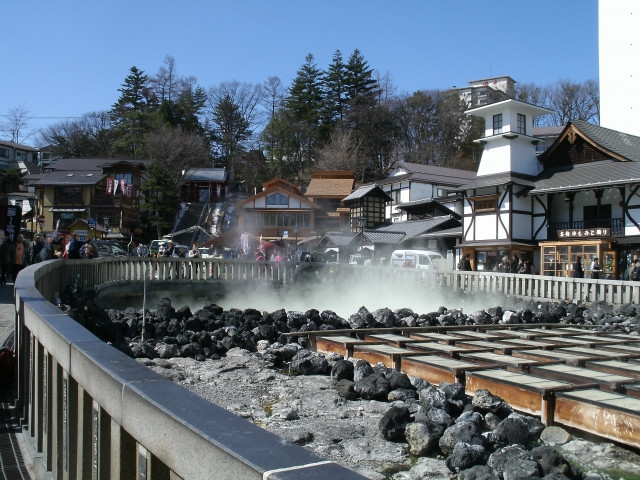
Kusatsu Onsen, located in Kusatsu Town in Gunma Prefecture, boasts the largest amount of natural spring water in Japan. Since there is a large amount of hot water, it is possible to enjoy the hot water as it is without circulation. The spring water is highly acidic and can smoothen the skin’s surface, so it is known as a hot spring that can beautify your skin. A running joke about the water’s acidity is that, “it can cure anything except love sickness”.

A special culture in Kusatsu Onsen is "Yumomi (湯もみ)", which has been passed down since the Edo period. Yumomi is a method to cool down the hot spring waters. Women would sing while stirring the hot water with a long wooden board that looks like a giant ice cream stick until the water is sufficiently cooled. Even now it is performed as a show to entertain tourists, so take a look when you visit Kusatsu Onsen.
Gero Onsen 下呂温泉 (Gifu Prefecture)
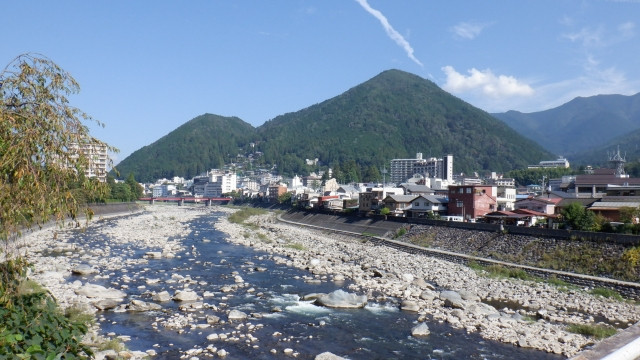
Gero Onsen is located along the banks of Hida River in Gero Town in Gifu Prefecture. Compared to the acidic hot spring waters in Kusatsu Onsen, the water in Gero Onsen is alkaline-based. There are many hot spring ryokans in Gero Onsen, as well as public foot baths that are free to visit.
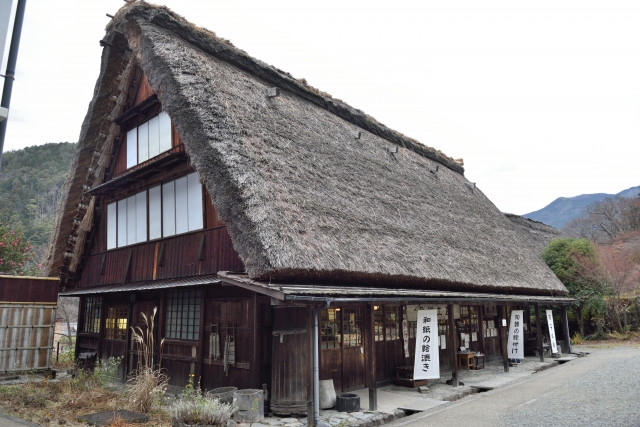
The symbol of Gero Onsen is Funsenchi, an outdoor hot spring that can be found right next to the Hida River and near the Gero Ohashi Bridge which is a scenic spot. Many tourists that visit Gero Onsen enjoy resting at Funsenchi to soak their tired feet whilst enjoying the breeze and the view of Gero Ohashi Bridge. Whilst you are in Gero Onsen, drop by Gero Onsen Gassho Village, a cultural museum that has gassho-zukuri buildings.
Beppu Hatto Onsen 別府八湯温泉 (Oita Prefecture)

“Beppu Hatto'' is the general term for Beppu City’s 8 hot springs areas: Hamawaki, Bepu, Kamegawa, Kannawa, Kankaiji, Hotta, Shibaishi, and Myoban Onsen. The 8 hot spring areas are scattered throughout Beppu City which is why each of the hot springs’ water quality including temperature and compositions are different, not to mention you can enjoy a different scenery at each area. Try visiting several, or all, of them to enjoy different types of hot springs.

The Jigoku Meguri, Hot Spring Hell Tour, is a popular tourist activity in Beppu. The entire tour consists of 7 hell springs with the starting point in the Kannawa Onsen area. While you go around visiting Beppu’s 8 hot spring areas, why not tour the hell springs too?
※ Beppu City, “別府八湯ガイド” Read about each hot spring area.
Hakone Onsen (Kanagawa Prefecture)
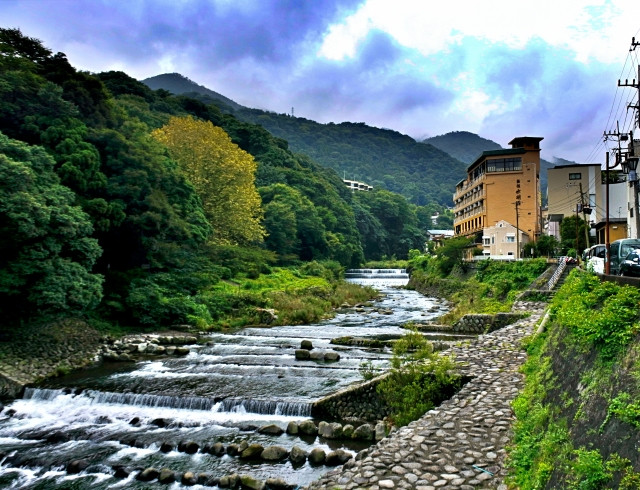
Hakone Onsen is a hot spring located in Hakone Town in Kanagawa Prefecture. It is a historical hot spring that was first discovered in the Nara period. It became famous during the Edo period for its “Hakone 7 Hot Springs (箱根七湯)”, a collective name for "Yumoto, Tonosawa, Miyanoshita, Dogashima, Sokokura, Kiga, and Ashinoyu hot springs. Today, there are 17-20 hot springs in Hakone, including newly excavated hot springs. There are roughly 6 types of hot springs, so you can enjoy and experience the difference in each.
Among Hakone’s many onsens, “Yumoto Onsen (湯本温泉)” is the most famous. It has the longest history and is known to represent hot springs in Hakone. Yumoto Onsen’s hot springs are described as a “simple onsen (単純温泉)” because it is mild and can be enjoyed by elderly and children too.

Hakone is famous not only for its hot springs, but also as a tourist destination. After soaking in the hot springs, be sure to visit Lake Ashinoko to ride a pirate ship, Owakudani where you can feel volcanic activity, and the Hakone Open-Air Museum where you can enjoy the combination of nature and art sculptures.
Noboribetsu Onsen 登別温泉 (Hokkaido)
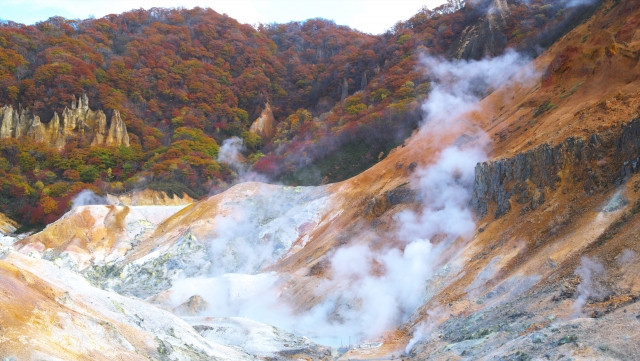
Noboribetsu Onsen is located in Noboribetsu City in the southwestern part of Hokkaido. “Jigokudani (地獄谷)”, literally “hell valley”, is the symbol of Noboribetsu and is the source of many hot springs in the area. It is a popular nature photography spot for tourists as the heavy steam rising from the rocky valley is an impressive sight, and the heat and smell makes it feel like you are near a volcano. Many people visit just to see Jigokudani even if they do not visit any hot springs.
There are 9 hot spring types in Noboribetsu Onsen, plus another 1 more type in Karurusu Onsen located 8km away from Noboribetsu Onsen. The hot spring waters of Noboribetsu Onsen are said to have healing properties. Give the hot springs a try when visiting Jigokudani.
Recommendations for Volcanoes in Japan
In this part, we will introduce volcanoes that you can hike or visit in Japan.
Mount Fuji 富士山 (Yamanashi & Shizuoka Prefectures)
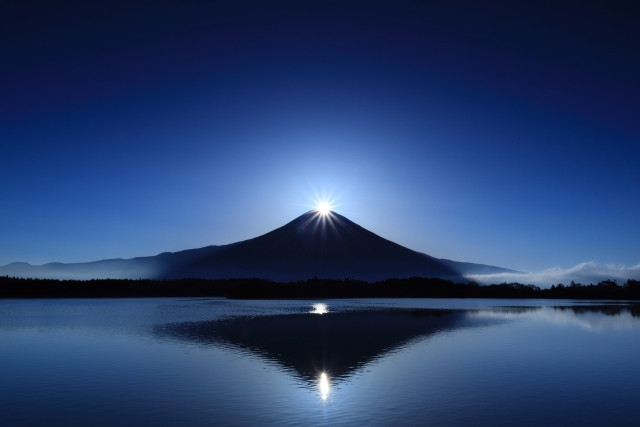
Mount Fuji is the tallest volcano in Japan at 3,776.24 metres tall, and is the beloved symbol of Japan loved by the Japanese since ancient times. It lies on the border between Yamanashi and Shizuoka Prefectures. Mount Fuji's last volcanic eruption was on December 16, 1707, it has yet to erupt since but is classified as an active volcano. There are many theories that Mount Fuji will be erupting again in the near future. Disaster preparations including evacuation plans are always in place just in case.
A few things you should know about climbing Mount Fuji:
-
It is only open to climb in summer.
-
There are 4 climbing trails, each with their own characteristics, facilities and difficulty level.
-
Camping is not allowed but there are mountain huts for overnight stays.
For more in-depth information about climbing Mount Fuji, read Climbing Mount Fuji and Hiking in Japan.
Mount Sakurajima 桜島 (Kagoshima Prefecture)

Mount Sakurajima is the most active stratovolcano in Japan. It has small eruptions several times a year spewing ash all around it but still the island where the volcano is located has inhabitants who have gotten used to it. Mount Sakurajima’s most recent large-scale eruption happened in July 2022. A level 5 alert was raised requiring all the island’s inhabitants to evacuate in the middle of the night.
Since Mount Sakurajima is so active, it is dangerous and prohibited to climb or get close to its crater. For tourists who want to visit Mount Sakurajima, go to Yunohira Observation Point, the highest point on Mount Sakurajima and the closest point to observe the crater.
Mount Aso 阿蘇山 (Kumamoto Prefecture)
Mount Aso is the biggest active volcano in Japan, and is located in Aso Kujū National Park in Kumamoto Prefecture within the Kyushu region. It is also one of “Japan’s Top 100 Geological Sites (日本の地質百選)”. Some of the activities that can be enjoyed on Mount Aso, aside from hiking, is flower viewing and horseback riding. There are also many volcanic hot springs in the area to enjoy a relaxing soak.
Since Mount Aso is an active volcano with a recent eruption on October 20, 2021, it is recommended to check the latest alert levels and news about the routes before climbing (some routes may be impassable). In addition, it is required to submit a notification of mountain climbing. It is recommended for experienced and expert mountain climbers only.
※ Kumamoto Prefecture, “阿蘇山登山情報” [2022.08.30]
Mount Unzen 雲仙岳 (Nagasaki Prefecture)
Mount Unzen is an active volcano located in the centre of Shimabara Peninsula in Nagasaki Prefecture. The volcano is known for being the cause of one of Japan’s most destructive volcano-related disasters when its eruption in 1792 triggered landslides and a tsunami. Its most recent eruption was in 1991.
Despite its record of destruction, Mount Unzen is a popular tourist destination for hiking and sightseeing. The most popular hiking route is the one that brings you to Fugendake, the prefecture’s highest climbable peak.
Daisetsuzan 大雪山 (Hokkaido)
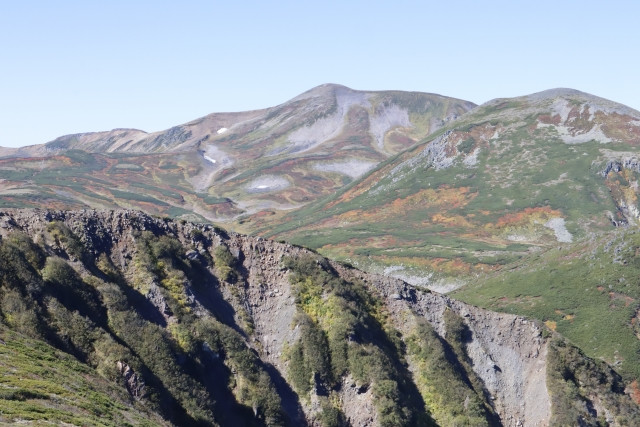
Daisetsuzan National Park is a well known national park in Hokkaido that attracts many tourists in autumn with its strikingly beautiful autumn leaves. The Daisetsuzan Volcanic Group (大雪山系, or simply 大雪山) is a group of volcanoes within the national park and includes Hokkaido’s tallest mountain, Mount Asahi (旭岳; Asahidake). The climbing season for Daisetsuzan is between late June to late September. A popular and easy to climb mountain here is Mount Kurodake which also has ropeway access.
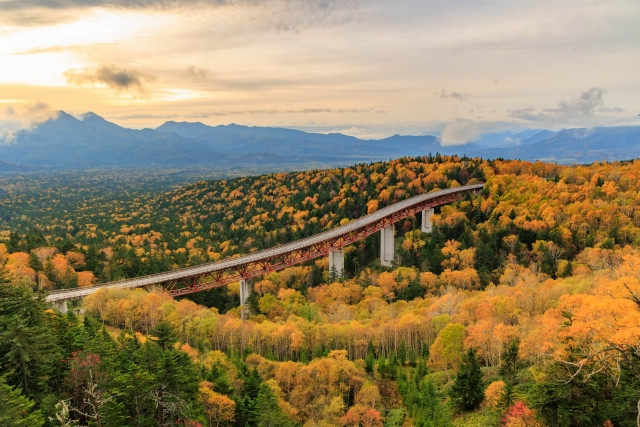
Daisetsuzan also has several hot spring spots to enjoy. For those who want to visit to see the autumn foliage, the season usually starts from late August to mid-September.
To Close

Japan has many volcanoes which result in many hot springs. Bathing in onsen is a huge part of Japan’s culture but it takes some getting used to bathing naked with strangers. When you visit Japan, stay at a hot spring ryokan and embrace the onsen culture. Where there’s onsen, there are also usually volcanoes too. If you feel up to it, why not take a drive to see a mountain or if you’re feeling sporty, go hiking.




















.jpg)












